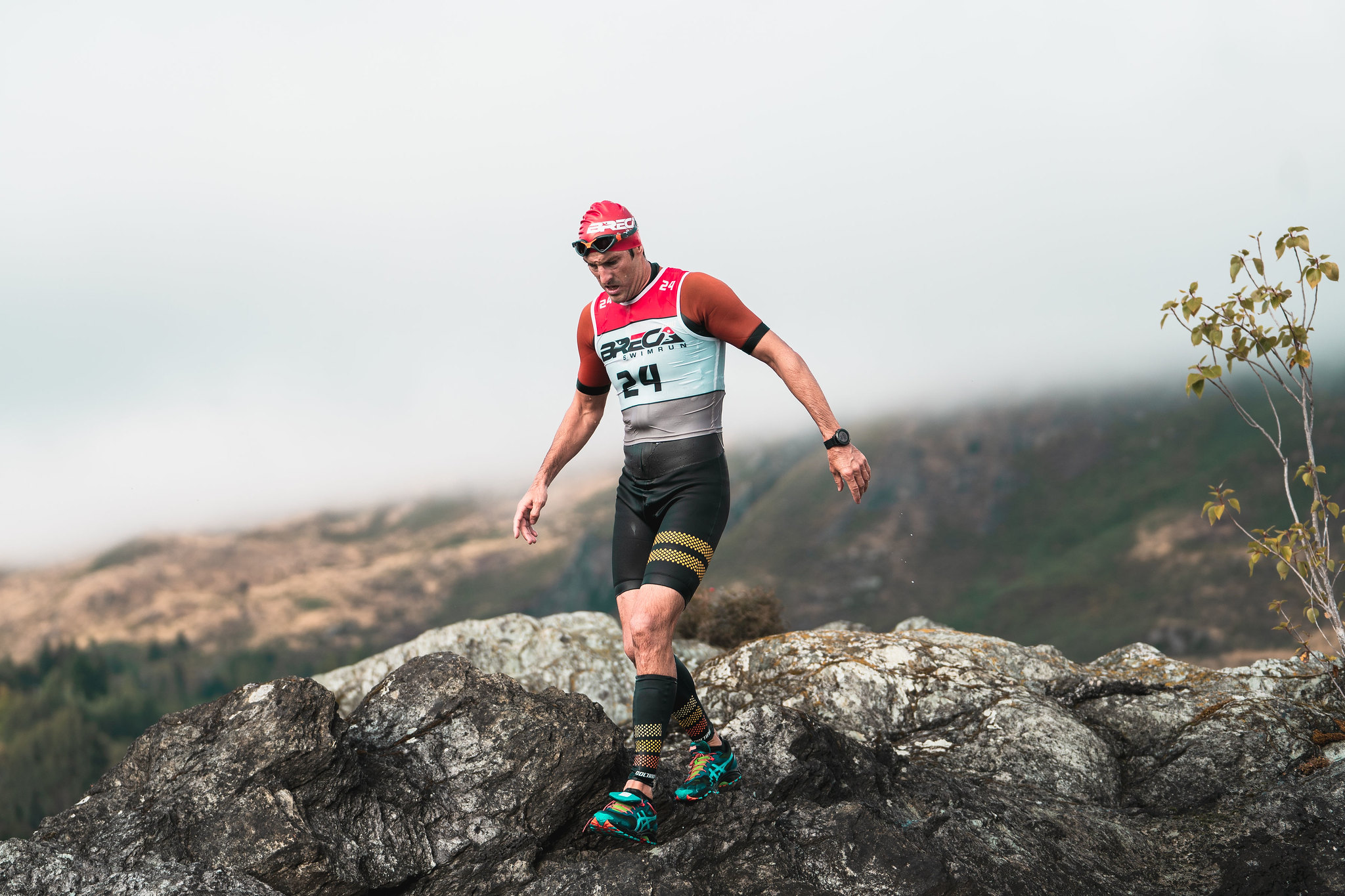What to wear under your wetsuit: socks and other stuff
In part 2 of our guide to swimrun kit, trail running and open water swimming coach Jude Palmer talks us through her top tips for avoiding chafing
Take it from me, of all the places you don’t want chafe it is on your soft, delicate bits. Something which will starts out as a minor irritation at the beginning of a race could have you wincing in pain as you cross the finish line. But as important as that is, what you wear under your wetsuit also has a bearing on how warm you are, how quickly you can get it down for that emergency toilet stop and how comfortable you are on the run.
Like many things, if you are new to swimrun, start out wearing your normal swim gear and add more as needed. For many women, often the obvious addition for run comfort is a sports bra either underneath a swimsuit or on its own, paired with, for example, bikini bottoms. Sometimes, especially if I know conditions are likely to be cold and thus the chance of ‘cabbing’ down is slim, the tightness of the suit can give me enough support. For men, go for trunks, jammers or anything that fits snugly under rubber. Trisuits are also an option.
Thermal underwear, rash vests or neoprene tops are a great way of adding a layer of warmth and the latter often have extra pockets for carrying snacks or paddles.
But even with the softest wetsuit and underwear combo, there is always the chance of chafe, especially if your swimrun is in the sea. So, whatever your choice of lube, slap it under your armpits, under straps, around the nether regions and around your neck. There is nothing like a scabbed over neck to prompt questions from friends and strangers alike over the type of fun you have had at the weekend. But before you dismiss it as a necessary pain, check two things: could improving your head and body position not only help you avoid chafe but also improve your swimming, and does your wetsuit fit you as well as it could?
Socks
Long, short, compression, or none at all are all options for socks and swimrun. Finding out what works for you will be a case of practise makes progress. But it is worth taking a few things into account before you dive in.
Personally, I love a long sock for the protection it brings to my legs when you're scrambling through bracken or over rocky ledges; if you know the conditions are going to be cold, it can provide an extra little bit of warmth too. If short socks are your thing, make sure you go for ones that go over the ankle as they offer some protection but also are less likely to scrunch up and cause rub. If you prefer not to wear socks, make sure you are confident that your feet can take the constant rub of wet, dry and grit during an event.
The evidence around the usefulness of calf compression during exercise is mixed, but if they work for you go for it with either full compression socks or short socks and calf guards. Clearly if you choose to wear socks and neoprene calf guards you can combine compression, protection and floatation all in one go.
Whatever you go for, wear what you would wear on race day every time you go out training and if you are not planning to swim and run at the same time, stand in a bucket full of water, or even better, get in the shower in your full swimrun gear before you go out running to mimic being fully soaked from a swim. There is nothing like a couple of laps around your local area to fine tune comfort and get yourself known among your neighbours.
MAIN IMAGE: Breca swimrun
